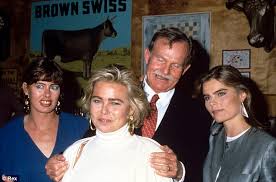Read Eric’s Travels excerpted here. Best, Christine (some photos i added of the house and mountains.)
Tracing Hemingway’s final steps in Ketchum, Idaho
ANALYSIS/OPINION:
You drive for three hours from Boise, through largely empty high desert country, to come to the place where Ernest Hemingway spent his final years, and where, on July 2, 1961, he chose to silence the demons forever.
Ketchum, Idaho, is also where many of Hollywood’s elite have second or third (or however many in the ordinal list) homes. For it is said that in the surrounding Sun Valley community, they can be unbothered in a way that is perhaps not so viable in Park City, Utah, the other ski community known for the glitziness of its populace away from Tinseltown.
I am met at the Sun Valley Lodge (1 Sun Valley Rd., Sun Valley, Idaho, 83353, 800/786-8259) by Jim Jaquet and his wife Wendy, who together run Jaquet Guide Services, wherein the couple offers specialized tours of Sun Valley that include restaurants, galleries and the Hemingway sites. .

As we drive away from the Sun Valley Lodge, Jim and Wendy point to various homes that belong to the rich and famous. Time was when they would take pilgrims closer, but a sense of privacy now pervades in Ketchum, and so today I must enjoy the posh homes from afar.
What I can get up close and personal to, however, is the Hemingway Memorial on Trail Creek Rd., erected in 1966 by friends and family of the deceased wordsmith on what would have been his 67th birthday. The bust of “Papa” Hemingway sits in a quiet alcove above a creek bed, and at its base is an inscription:
“Best of all he loved the fall
the leaves yellow on cottonwoods
leaves floating on trout streams
and above the hills
the high blue windless skies
… Now he will be a part of them forever.”
After a quick jaunt through the heart of town, Jim and Wendy take me to a spot on the outskirts of Ketchum and pull over. Jim hands me a pair of binoculars to spy, far in the distance, the privately owned Mary and Ernest Hemingway House and Preserve, where the scribe lived in his final tumultuous years, anguished that he was no longer able to write as he once had.
As no tourists are allowed near the home (the road leading up to it is also privately run), Jim shows me photographs of what the cabin looked like when Hemingway occupied it. Eerily, the shotgun he used to end his own life is in one of the photos, which can’t help but give me a chill.

Jim tells me that one of the accepted theories about Hemingway’s suicide was that it was brought on by depression, magnified by his decreasing ability to write to his own liking, as well as the rather copious amounts of alcohol he was known to consume. Furthermore, some have posited that both the physical and “invisible” injuries he suffered during his time in the ambulance corps during the First World War may have later reared their ugliness as Hemingway sank deeper and deeper into despair until he could take it no more.
Add to this a condition called hemochromatosis, or too much iron in the blood, his diabetes and various other problems.
The midcentury Hemingway cabin is now run by The Community Library, and it is listed on the National Register of Historic Places. Today I shall get no closer.

It’s only appropriate that our next stop is Hemingway’s final resting place, the Ketchum Cemetery, located at 1026 N Main St. Papa’s grave is easy to find: Pilgrims leave pennies on the gravestone, as well as tributes like a half-finished bottle of Jameson today.
There’s also a journal, in which visitors can inscribe their thoughts. Not knowing precisely what to say, but knowing I must write something, I set pen to paper, allowing the ink to move me:
“One writer to another, may our language be the better angels of man. — EFA, May 14, 2017”
Friends and relatives of Papa are also interred here, including Margaux Hemingway, Hemingway’s granddaughter and a respected actress in her day. Unfortunately, like Ernest, Margaux was afflicted by depression and battled a chronic alcohol problem. She was found dead at her L.A. home July 1, 1996, the result of a sedative overdose.

Margaux was the fifth member of her immediate family to commit suicide, according to the IMDB. She is buried a few feet away from her grandfather.
Margaux’s sister, Muriel, is also an actress, and earned an Oscar nomination at the tender age of 19 for her role in Woody Allen’s 1979 film “Manhattan.” She still acts to this day.


From atop one of the lava cones, I look back to the northwest and the Sawtooth National Forest, whose accompanying mountain ranges enclose Ketchum and Sun Valley. My view from here is prosaic and inspiring — doubtless part of the reason Hemingway chose this central Idaho wonderland to try to re-stoke the artistic fires within.
It proved to be too large a task even for the glories of nature.




